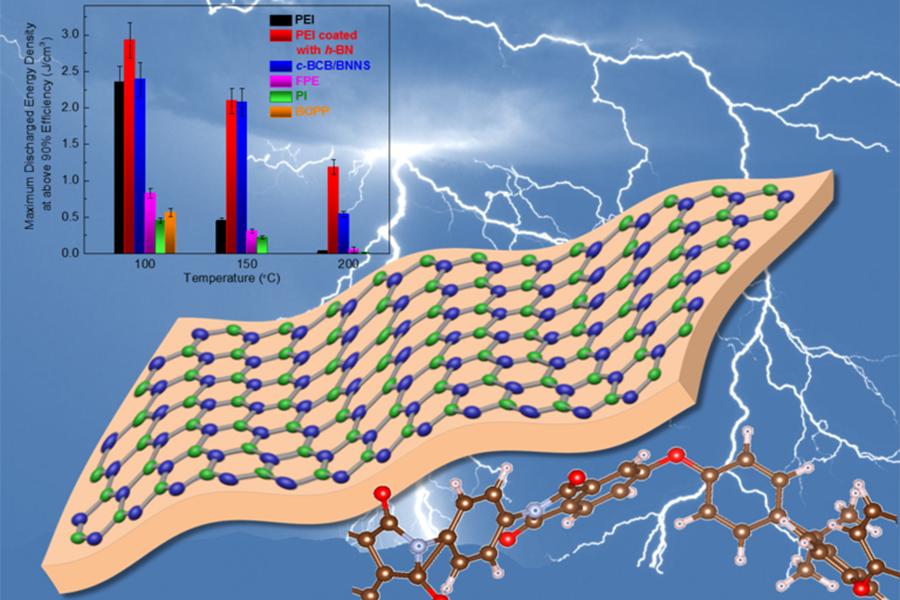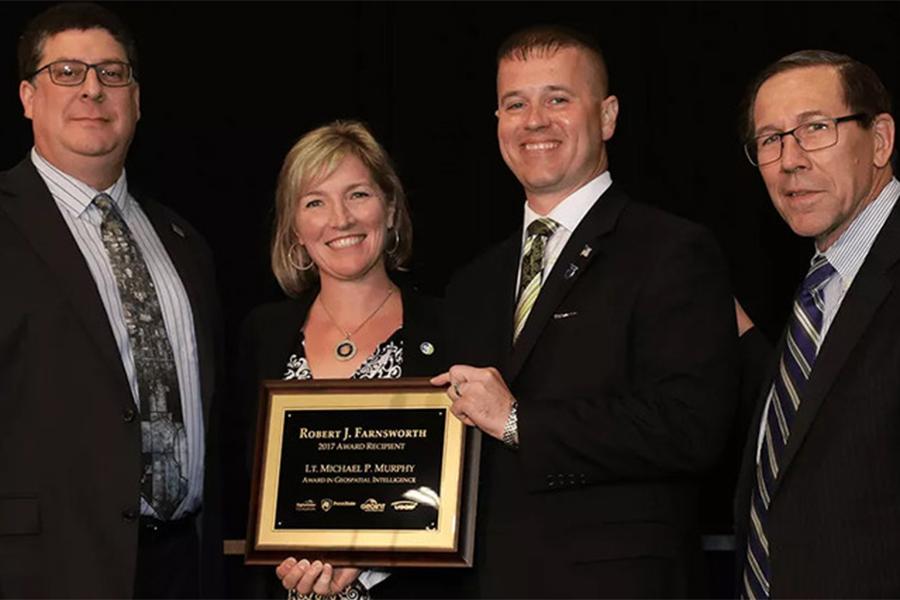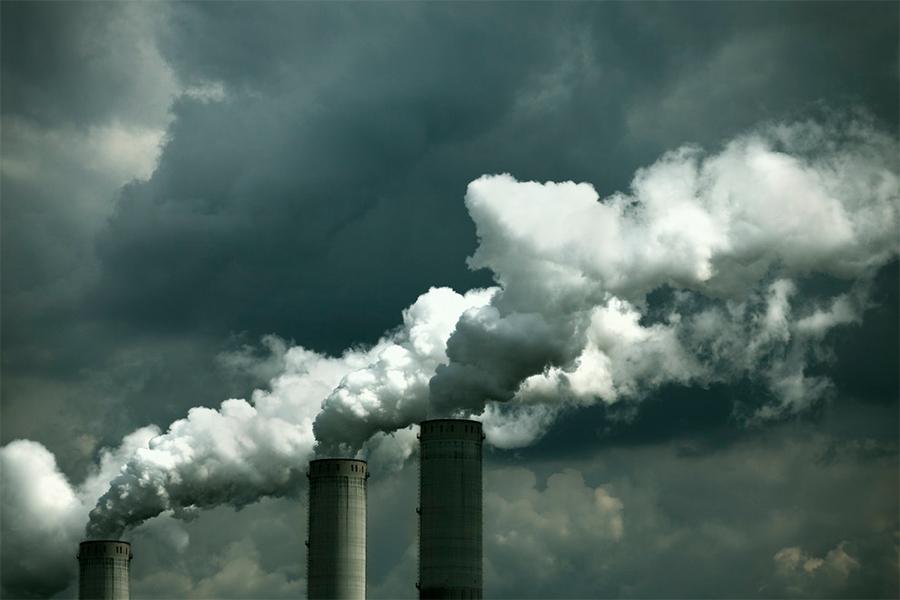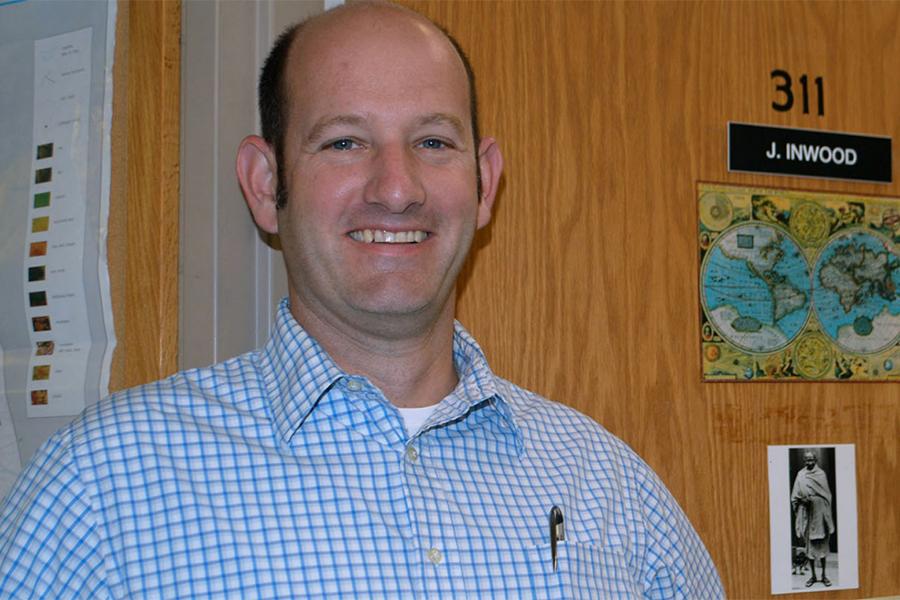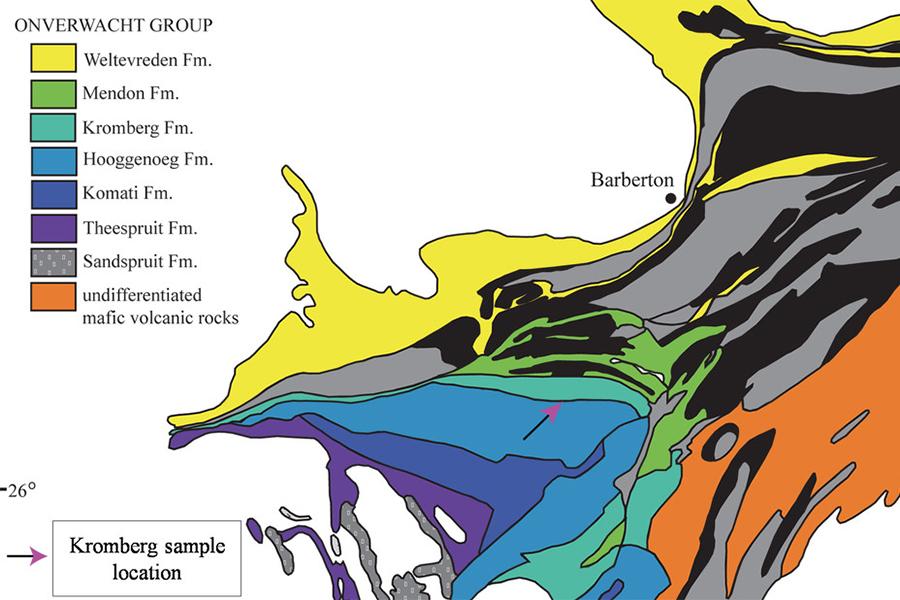A new, lightweight composite material for energy storage in flexible electronics, electric vehicles and aerospace applications has been experimentally shown to store energy at operating temperatures well above current commercial polymers, according to a team of Penn State scientists. This polymer-based, ultrathin material can be produced using techniques already used in industry.
Robert J. Farnsworth, a retired U.S. Army reconnaissance engineer and Penn State alumnus, was selected to receive the 2017 Lt. Michael P. Murphy Award in Geospatial Intelligence. He was honored during the 2017 United States Geospatial Intelligence Foundation (USGIF) Symposium in San Antonio on June 5.
As Penn State’s Renaissance Fund celebrates its 41st year of honoring outstanding community members and helping students in need, its board of directors has selected as its 2017 honoree Joel N. Myers, a three-time Penn State alumnus; State College resident; and the founder, president and chairman of AccuWeather Inc.
The sun is again shining on SunsetWx, a sunrise and sunset forecasting tool devised by a trio of current and former Penn State students. The Weather Channel, one of the world’s foremost providers of weather information, has partnered with SunsetWx and will feature its exclusive forecasting methodology on two of the network’s popular shows, AMHQ and Weather Underground.
While most climate scientists, including the Intergovernmental Panel on Climate Change, implicitly define "pre-industrial" to be in the late 1800's, a true non-industrially influenced baseline is probably further in the past, according to an international team of researchers who are concerned because it affects the available carbon budget for meeting the 2 degrees Celsius (3.6 degrees Fahrenheit) warming limit agreed to in the Paris Conference of 2015.
Predicting the weather is a challenge, but predicting who will win the national WxChallenge isn’t nearly as hard. Penn State’s WxChallenge team continues to dominate the 20-week weather forecasting competition, recently earning its sixth straight top finish.
During the civil rights movement, activist groups such as the Student Nonviolent Coordinating Committee (SNCC) used geography and geospatial intelligence to identify protest sites and to plan civil rights protests. A new $373,000 National Science Foundation grant is letting researchers dig into those geospatial tactics to see what can be learned about patterns of racial inequality and how the SNCC collected and leveraged geospatial intelligence data to bolster its activist efforts.
Large, robust, lens-shaped microfossils from the approximately 3.4 billion-year-old Kromberg Formation of the Kaapvaal craton in eastern South Africa are not only among the oldest elaborate microorganisms known, but are also related to other intricate microfossils of the same age found in the Pilbara Craton of Australia, according to an international team of scientists.
The Penn State Center Pittsburgh will host a screening of the WPSU documentary “Managing Risk in a Changing Climate” and a panel discussion featuring climate experts and Pittsburgh stakeholders from 5:30 to 7:30 p.m. on July 13 at the Energy Innovation Center, located at 1435 Bedford Avenue, in Pittsburgh.
Shimin Liu, Joseph Kreutzberger Early Career Professor and assistant professor of energy and mineral engineering in the College of Earth and Mineral Sciences at Penn State, has been selected to receive one of the 2017 Freeport-McMoRan Career Development Grants from the Society for Mining, Metallurgy and Exploration.


